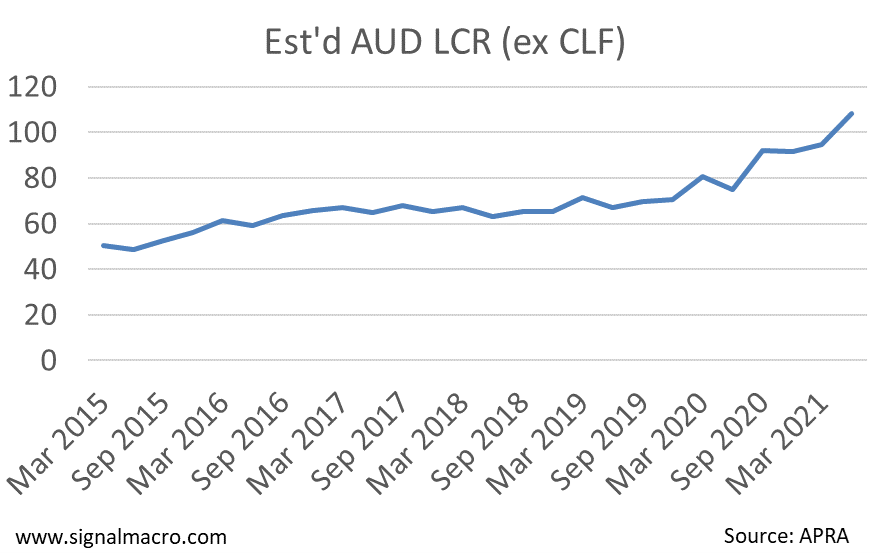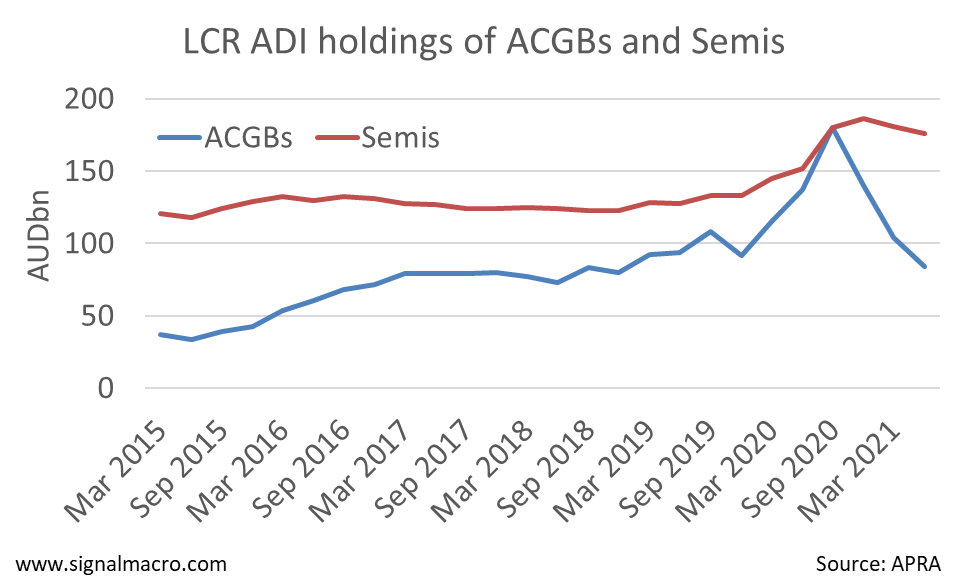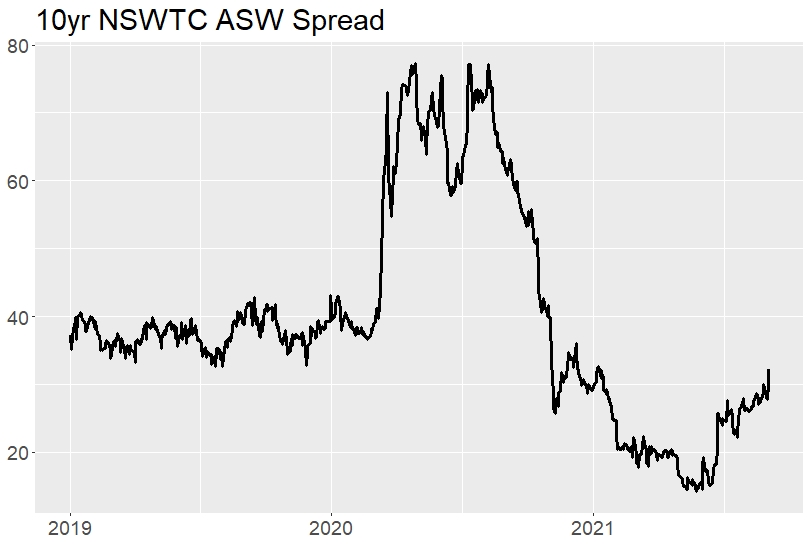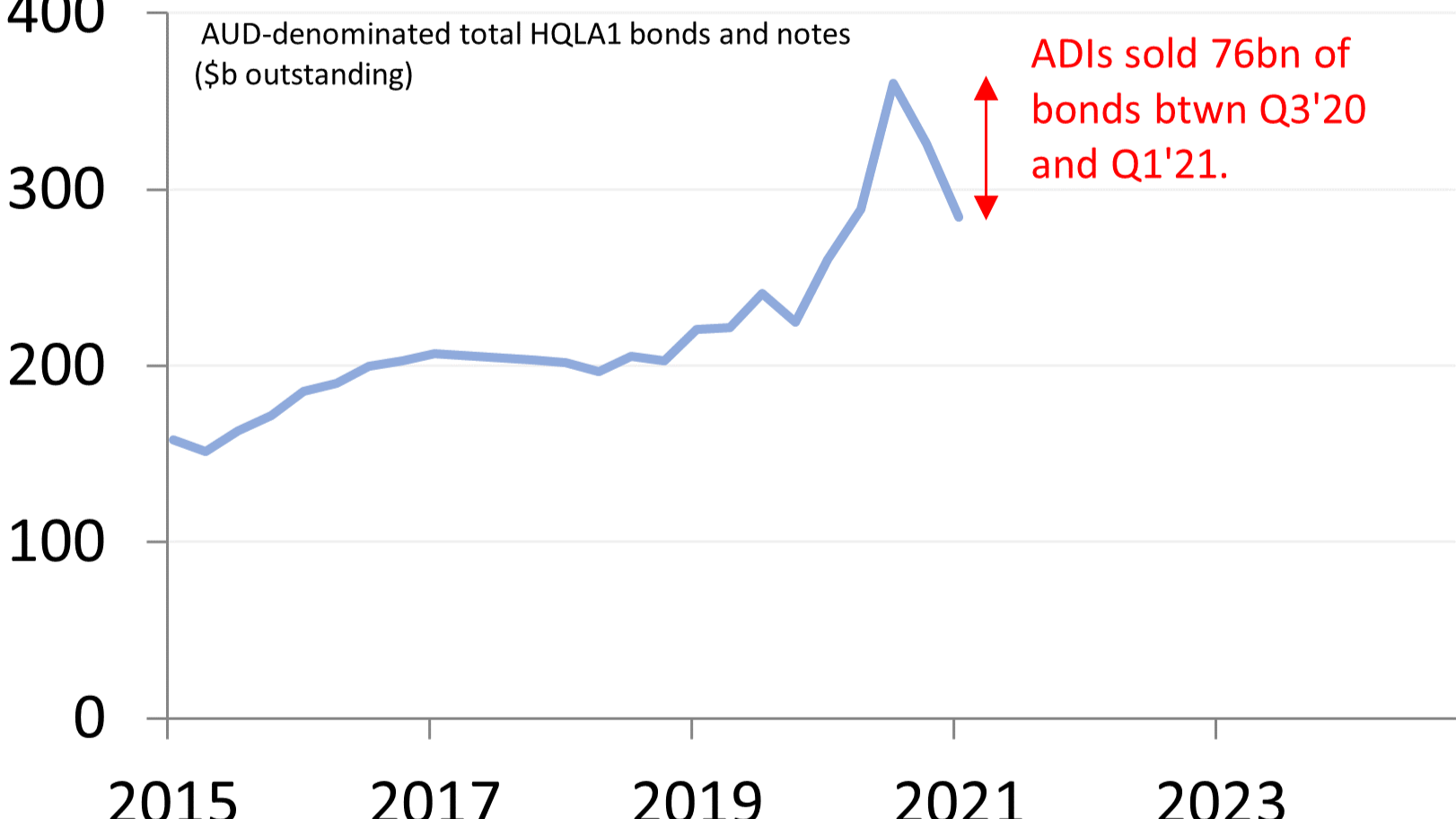APRA closes the Committed Liquidity Facility

Coolabah Capital
In a move that's a bit more aggressive than I had expected, APRA just announced that they will close the CLF (Committed Liquidity Facility).
The CLF will be reduced in four equal steps (1 Jan'22 - $104 billion; 30 Apr'22 - $70 billion; 31 Aug'22 - $35 billion, and $0 on 31 Dec'22). In practice, the reduction is a bit more aggressive, as from 1 Jan 2022 the first 100% must come from genuine High-Quality Liquid Assets (HQLA). From that date, Australian Deposit-Taking Institutions (ADIs) will be required to hold sufficient HQLA to meet the regulatory 100% minimum Liquidity Coverage Ratio (LCR). They can use the remaining CLF for their buffers.
In a surprisingly strong letter, APRA says that they expect "ADIs to purchase the HQLA necessary to eliminate the need for the CLF."
For the system as a whole, this won't be a problem upfront. According to APRA data, the aggregate Australian Dollar LCR for LCR-ADIs, excluding the CLF, was about 108% in Q2'21 (it was 132% including the CLF). However, the aggregate hides some important differences. We know from the various Pillar 3 reports that smaller banks tend to rely on the CLF to a much greater extent for HQLA, so they are going to come looking for assets.

As a general rule, banks like to get ahead of regulatory change, so I fully expect that they will seek to end their reliance on the CLF well before the closure at the end of 2022. This means that they'll also be looking for assets.
If they want to get to 125% without the CLF, they'll need to find a little over $80 billion of HQLA. If they want to get back to 132% on the AUD LCR, they'll need to find $116 billion of HQLA (not all of the $139 billion of CLF showed up as liquid assets stacks as reported to APRA).
Regulation (which I think should to be changed) means that ADIs won't necessarily hold all this extra HQLA as bonds -- though I think they will buy some more. The lack of revenue associated with that ES Cash makes it a bit hard to stomach, particularly for the smaller ADIs (who tend to have lower ROE hurdles).

All this means that Semis are likely to tighten a bit from here.

Related wires

Want more content like this?
Give this wire a like if you've enjoyed the discussion and hit follow to be notified when new episodes are released.
If you're not an existing Livewire subscriber you can sign up to get free access to investment ideas and strategies from Australia's leading investors.
2 topics

Matt is a portfolio manager at Coolabah Capital, an asset manager than runs over $8 billion in fixed-income strategies. Matt has 17 years of experience on both the sell-side and buy-side. He spent most of his career (2008 to 2020) at UBS, the...

Matt is a portfolio manager at Coolabah Capital, an asset manager than runs over $8 billion in fixed-income strategies. Matt has 17 years of experience on both the sell-side and buy-side. He spent most of his career (2008 to 2020) at UBS, the...
